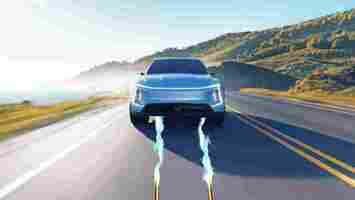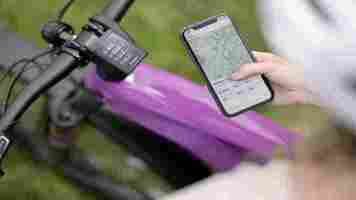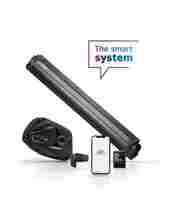UK slaps Uber with THE LAW, rules drivers are workers in final verdict
The saga of whether Uber and other gig-working drivers are full-time employees or independent contractors is never-ending. However, in the UK, the story has passed a crucial milestone.

As the UK supreme court has ruled today, Uber must classify its drivers as workers. As a result it must provide forms of employee benefits such as a minimum wage and holiday pay, BBC reports .
This appears to be the final ruling for Uber in the United Kingdom. The “not a taxi-firm” ride hailing service has already appealed three previous court decisions in the UK, all of which said that drivers should not be considered independent.
With the latest ruling coming from the nation’s supreme court, there’s nowhere left for Uber to appeal. The courts ruling says a driver should be considered working not just when driving a passenger, but when they are logged into the app.
While Uber does afford drivers a huge amount of flexibility and control over when they work, the bits that really matter when it comes to running a business are controlled and run by the ride-sharing firm.
Under Uber’s iron fist, drivers are not independent workers, free to dictate the exact terms of how they work, what they earn, and how they handle complaints. They are subordinates in the gig-work empire , or if you prefer something more visceral, they are exploited workers.
Earlier this week, Uber outlined its plans to bring its California-oriented “Prop 22” standards for gig-work to the EU. While the UK is no longer part of the European Union, its supreme court’s ruling sets an undeniable precedent that’s at odds with the ruling from the US last year.
Last November, US voters passed Prop 22 in California meaning that firms reliant on gig-workers, like Uber, Lyft, and DoorDash, don’t have to pay a full suite of employee benefits like health care, paid sick leave, and holiday pay. But they do give drivers some perks they didn’t have previously, you can read more about that here and here .
Ultimately, Prop 22 is still weighted in Uber’s favor. However, in the UK it has no such fall back, and speculation is mounting as to how Uber will continue to operate in the country now that it has to front the operating costs that it should have been paying all along.
It could lead to increased costs for riders, or Uber will face an even longer uphill slog to that elusive goal: profitability .
Update Monday February 22, 2021, 0755UTC: The original version of this article said that Uber drivers are classed as employees. This is ambiguous, the correct legal term is “workers.” The article has been updated to reflect this.
SHIFT is brought to you by Polestar. It’s time to accelerate the shift to sustainable mobility. That is why Polestar combines electric driving with cutting-edge design and thrilling performance. Find out how .
How Nikola Tesla’s AC and radio waves could unlock wireless EV charging
Electric vehicles are becoming more and more popular, but still, range anxiety and charging time are obstacles to their widespread acceptance.

Imagine, though, charging your car by simply changing lanes and driving over to special charging strips embedded in the road.
That’s exactly the vision of Khurram Afridi , associate professor of electrical and computer engineering at Cornell University. Along with his team, they’re developing a groundbreaking approach to charge EVs without the need for cables.
Drivers could save time, and cars would need smaller batteries, which means that their cost would be reduced, as much as their environmental impact.
In fact, over the past decades, many scientists experimented with the idea of wirelessly powering vehicles in motion.
However all previous attempts, mostly employing alternating magnetic fields and low frequencies, have failed. The materials needed were bulky and expensive, while the energy produced posed safety threats to the drivers.
Afridi’s project promises an innovative solution.
Following his predecessors, Afridi’s idea originated from Nikola Tesla’s use of alternating electric fields.
But he took it one step further by combining it with his expertise on spacecraft communication through high-frequency radio waves.
Simply put, he managed to develop an electric field system operating on high frequency.
According to lab tests, it’s almost 200 faster than the former magnetic field systems.
Two insulated metal plates on the ground create alternating electric fields that attract and repel charges in a pair of corresponding metal plates attached under the vehicle.
The interaction between the plates produces a high-frequency current that is picked up by the car’s circuit. The current generated is then directed towards the car’s battery so it can charge as it drives along.
For this to work, the road infrastructure needs to massively change.
Afridi offers two suggestions: to electrify high-traffic roadways, or to install charging strips at stop signs and traffic lights within cities. S o cars can charge at specific locations, or top up as they’re waiting at intersections.
Well, wireless charging might sound crazy, but it could definitely boost the acceptance of EVs as long-distance sustainable transport model.
Nevertheless, to implement this kind of technology on mass is far more challenging than it is to develop it in concept.
Do EVs excite your electrons? Do ebikes get your wheels spinning? Do self-driving cars get you all charged up?
Then you need the weekly SHIFT newsletter in your life. Click here to sign up .
Bosch brings ebike personalization through smart hardware and OTA updates
Did you know SHIFT is taking the stage this fall ? Together with an amazing line-up of experts, we will explore the future of mobility during TNW Conference 2021. Secure your ticket now!

Our cars have evolved through over-the-air software updates that add new functions and services. Now Bosch has set their sites on a similar capability to ebikes through their white label BoscheBike Systems and the eBike Flow app.
The most important feature is not what it does but what it will do. New functions and additional digital services will be offered via over-the-air updates. This creates a relationship between the rider and the bike vendor.
On one hand, it’s a valuable opportunity for the company to gain valuable data from the app users. In turn, riders have access to an evolution of new product offerings and services.
It’s a fundamental shift to the company-consumer relationship. An ebike is enhanced after purchase and throughout its entire service life.
According to Claus Fleischer, CEO of Bosch eBike Systems:
Bosch brings personalization to hardware capabilities


The eBike smart system contains several key components which connect with the app via Bluetooth:
The LED Remote is thumb operated. It uses different colors to signify the riding mode. It can display information such as the current charge status and support level.
The Kiox 300 display sits on the handlebar, displaying rider fitness data syncing with the eBike Flow app, and with Apple Health after the ride.
The PowerTube 750 offers the maximum range in the current Bosch eBike battery portfolio . It is optimally designed for climbing and longer distances. It weighs in at 4.4 kilograms and charges to 50% in just over two hours and to 100% in about six hours using the 4A Charger.
The Performance Line CX drive unit provides a maximum 85Nm of torque for a natural riding experience. In the eBike Flow app, the strength of the support, dynamics, maximum speed, and maximum torque can be set to adapt to different riding modes and styles .
Over 100 brands have adopted Bosch’s modular product portfolio integrating it to suit their own brand design.
The eBike Flow app bundles all important information on the home screen — from the connection status of the eBike to the next service appointment and the battery charge status. It also shows the total mileage of the drive and the distribution of the different riding modes.
Bosch firmware updates bring increased security
Firmware updates are an essential part of electric bike maintenance. They fix software bugs, send performance updates, and maintain security. The OTA updates remove the need to visit a bike shop or service center for the latest software.
According to Bosch, future eBikers will benefit from theft protection improvements, such as the trigger of an acoustic alarm to deter thieves and, in the event of theft, tracking the bike’s location in the eBike Flow app.
The eBike Flow app launches in autumn with Android and iOS downloads, with initial supports in English, German, and French.
Do EVs excite your electrons? Do ebikes get your wheels spinning? Do self-driving cars get you all charged up?
Then you need the weekly SHIFT newsletter in your life. Click here to sign up.